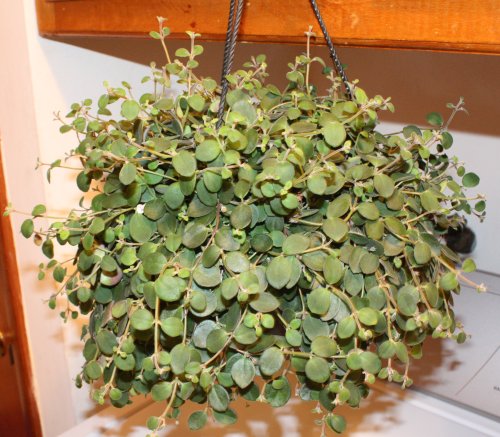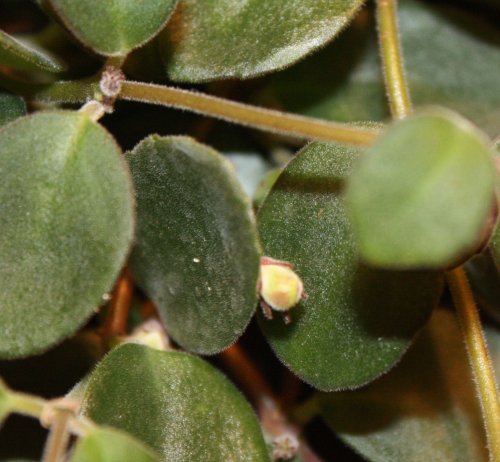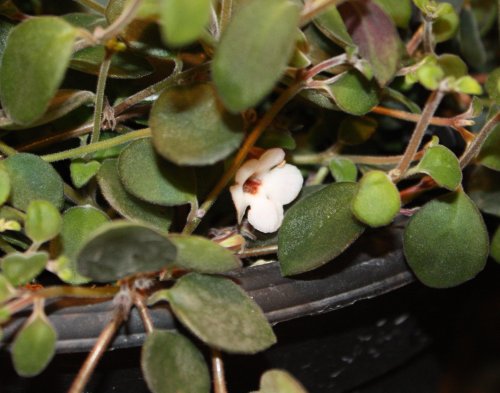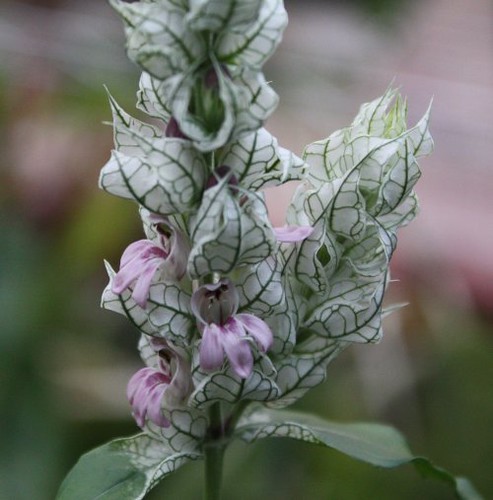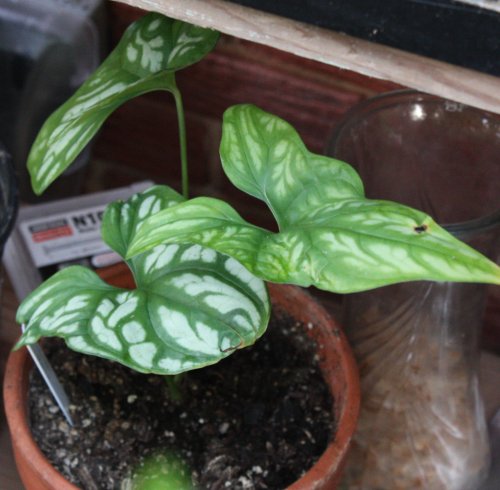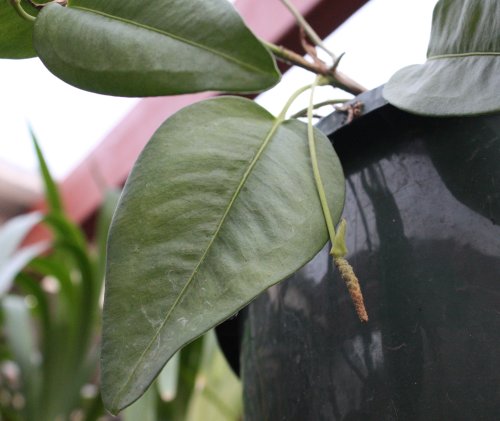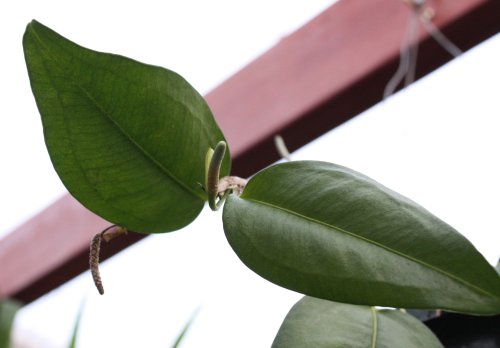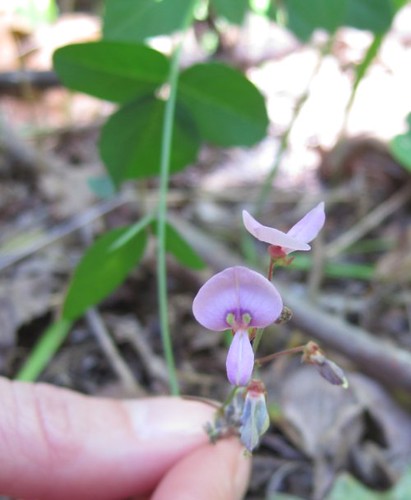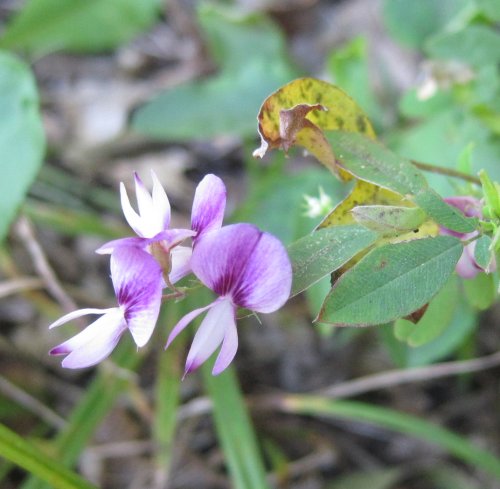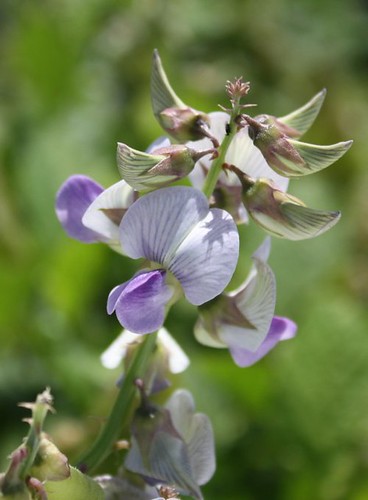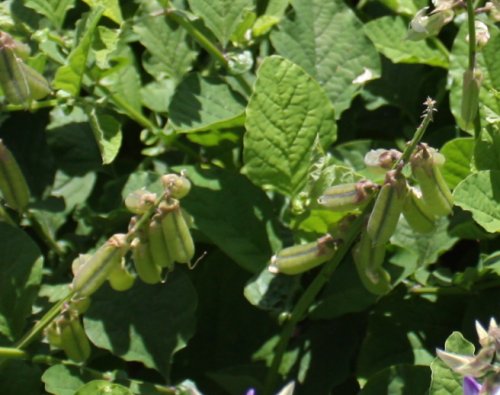I have been growing my "White Shrimp Plant" or "Squirrel's Tail" (
Justicia betonica) for a year and a half now. Since I got to see this plant growing in its natural habitat in Hawaii, I knew the conditions that it prefers, so I figured that it would bloom fairly regularly for me.
It has been growing steadily, but no blooms. It's not the most attractive plant when it is not blooming, so I've been kind of annoyed with it. It just gets these really long, lanky stems with few leaves on them, except for the tips. I prop up the stems so that they don't break off under the weight or get broken off by me moving around in the greenhouse. I have wondered whether I should cut the plant back to encourage new growth that might be more full and bushy, so that it at least doesn't look so silly, but I have decided to let it be. It is potted with a couple of other Shrimp plants (
Justicia), so I get those to bloom on occasion and get to enjoy them.
Every time my White Shrimp produces a new set of leaves, I think "This it is! It's finally a bloom!" They just start so small and look just like the beginning of the blooming bract. After all, the white blooming bract is just a bunch of modified leaves. But then a couple of days later the leaves get larger and stay green and I realize that it's not a bract, just another set of leaves. Well, a couple of weeks ago I had my normal realization that this
could be the first blooming bract when a new set of green "leaves" began to grow from the tip of one of the longest stems. A couple of days later the two little leaves had turned white and the green veins were showing. I could tell this was finally it!
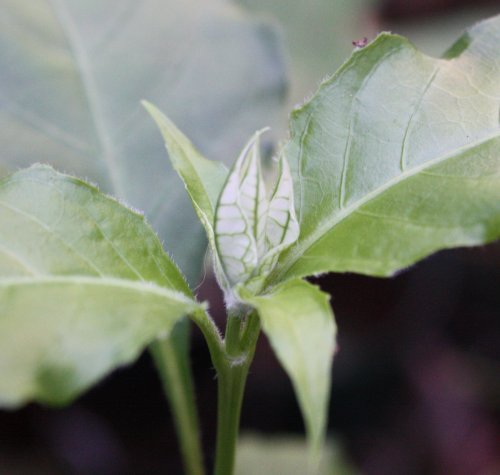 |
| Beginning of the bloom bract - Justicia betonica - Jan 16, 2011 |
The bract continues to grow longer with more pairs of white petals, making it look like a shrimp or a long squirrel's tail - although not the right color to look much like either. Eventually, the actual flowers will stick out between the white petals that make up the bract. The blooms are light purple or pink and look like most other flowers from the
Acanthaceae family.
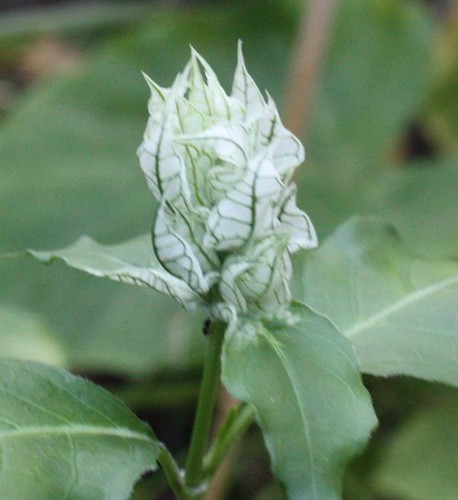 |
| Justicia betonica - Jan 28, 2011 |
For now, it just continues to grow longer and a new bract is beginning to form next to the first.
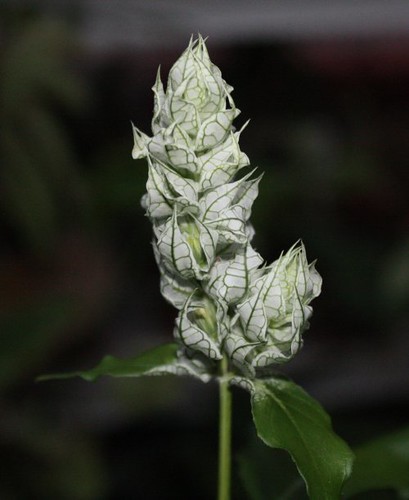 |
| Justicia betonica - Feb 8, 2011 |
Just to further show that the bract is a bunch of modified leaves, you can see that the set of leaves just below the bract is half colored the same as the bract itself.
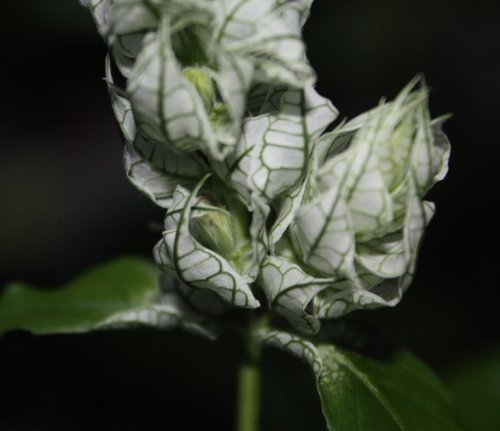 |
| Justicia betonica - Feb 8, 2011 |
I'll post a photo update when the actual blooms peak out of the bract.
